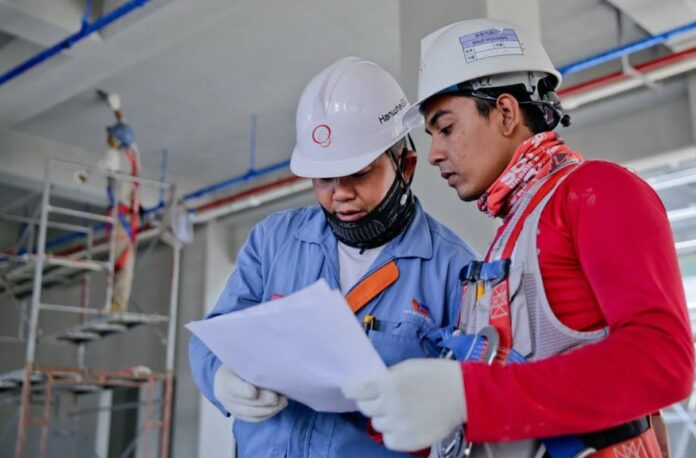Table of Contents
Workplace health and safety is a catchall term that refers to any process involved in the systematic management of health and safety risks in the workplace. It’s a practice that protects your workers from common workplace hazards, such as trips and falls, exposure to toxic materials and improper use of equipment.
All industries need health and safety management, but workers in the construction sector arguably need it the most. According to data from the Health and Safety Executive (HSE), the construction industry saw the second-highest number of workplace injuries (next only to the agriculture, forestry and fishing industry). What’s more, HSE found that workers for building contractors in electricity, gas, steam and air conditioning supply report the highest cases of ill health related to work.
These risks explain why health and safety management is a legal requirement under the Health and Safety at Work etc. Act 1974, which requires all employers to ensure the health and safety of their staff by providing them with training, equipment, PPE and other health and safety resources.
But aside from being a legal requirement, there are other compelling reasons to invest in health and safety training for your teams.
1. Workplace Accidents Tend to Be Caused by Human Error
It’s estimated that up to 90% of all workplace accidents are caused by human error.
It’s no surprise then that HSE has an entire section on their website dedicated to the relationship between workplace accidents and human error — an area broadly classified into two types:
- Action Error — This covers action-based errors such as slips and memory-based errors such as risk lapses.
- Thinking Error — This covers rule-based mistakes (e.g., deviating from best practices) and knowledge-based mistakes (e.g., inaccurate understanding of rules).

While human error is virtually impossible to prevent, health and safety training helps stamp out the most common lapses and mistakes your workers can make in the workplace.
2. Training Helps Prevent Deadly Accidents
Health and safety training helps you cement best practices designed to prevent the most debilitating and deadliest accidents in the workplace. These include:
- Falls from heights — the second leading cause of injury deaths in the world, according to the World Health Organisation
- Being struck by a moving vehicle
- Being hit by objects falling from a height
- Being trapped by a collapsing or overturning structure
- Coming into contact with moving machinery.
Training will help teach workers how to prevent these accidents and what they should do if they are involved in one.
3. Training Improves Worker Productivity
Apart from the obvious benefits to your employees’ health and safety, investing in training also shows your employees that you genuinely care about their well-being and development.
According to a SurveyMonkey study, 86% of employees consider job training to be important to them, and 74% are willing to learn things outside of work hours to improve their performance.

The idea here is simple: treat your employees well, and they’ll be happy to stay with you and work hard.
4. Training Helps You Qualify for More Work
Accreditation schemes in the construction industry, such as the Common Assessment Standard, look at health and safety management as a key factor of your risk management compliance. Showing that you’ve invested in health and safety training is just one of the many requirements to demonstrate compliance.
Once you’ve completed the Common Assessment Standard (or some other accreditation scheme), your business is in a better position to qualify for contracts that prioritise companies with proper certification.
Make the Construction Industry Safer — Invest in Health and Safety Training
As we enter another , now is the perfect time to evaluate how much time and resources you’re devoting to health and safety training. Make health and safety a priority for 2022 and beyond. If you’re unsure where to start, get a health and safety assessment from a trusted provider of risk mitigation services in the UK.



























































